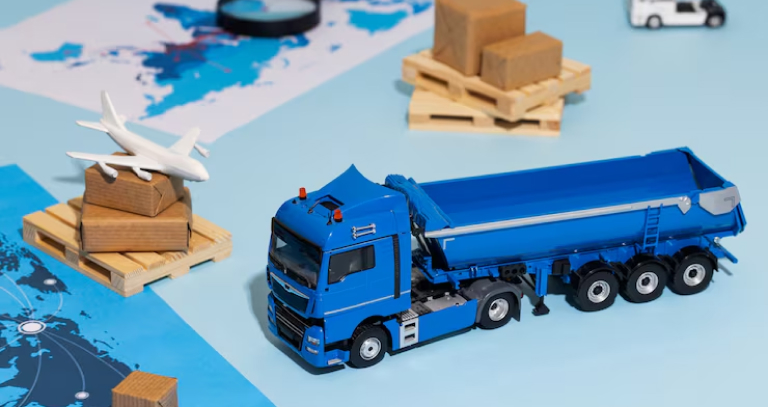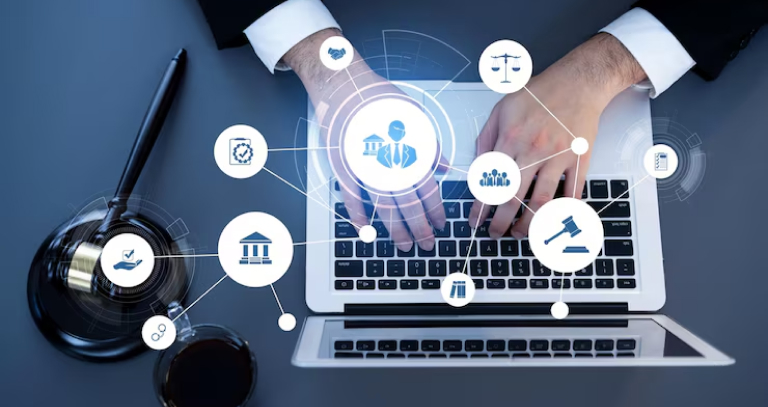How to Monitor Solar Panel Output with IoT
Ditstek Blogs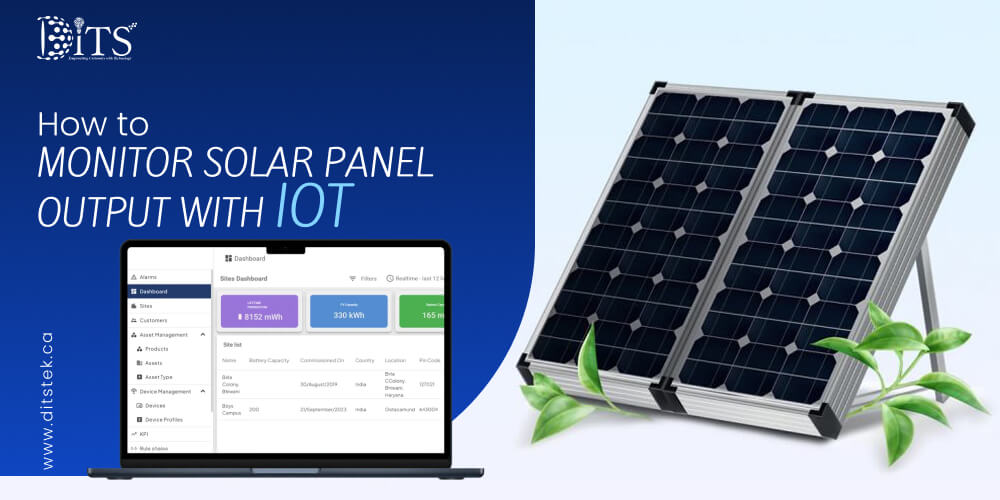
The global shift toward clean energy has accelerated the adoption of solar technologies across commercial and industrial sectors. But for solar energy systems to operate at peak efficiency, businesses need more than just well-designed panels; they need accurate, real-time visibility into system performance. This is where the solar panel monitoring system with IoT becomes a game-changer.
For companies that manufacture solar panels, build control software, or design solar-powered applications, integrating IoT opens new possibilities. From tracking output fluctuations to predicting faults before they happen, IoT-based solar panel monitoring allows energy businesses to offer more innovative, more reliable, and customer-centric products.
In this blog, we’ll explore how solar panel monitoring using IoT helps businesses improve their products and services, whether they are developing hardware, building a software stack, or planning a powerful solar panel monitoring app. Also, how partnering with an experienced IoT development company can streamline this transformation.
Want Real-Time Insights for Your Solar Panels?
Access data-driven intelligence with a secure, scalable IoT platform tailored to your business needs. Ensure peak performance at every site.
The Role of IoT in Solar Panel Monitoring
Solar companies can no longer rely on traditional methods to track performance of systems and maintain uptime. To get real-time insights and remote control over solar infrastructure, many businesses are now turning to IoT-based solar panel monitoring.
By integrating sensors and connected devices into solar hardware, businesses can automatically collect data on key metrics, like voltage, current, panel temperature, and overall system output. This data is transmitted to a central cloud platform, where it can be analyzed, visualized, and acted upon in real time.
A solar panel monitoring system with IoT empowers energy providers and solar equipment makers to optimize performance, reduce maintenance costs, and deliver better value to their customers. Whether they want to track a single installation or manage hundreds of solar sites across regions, IoT provides the tools to scale efficiently.
What IoT Enables for Solar Businesses
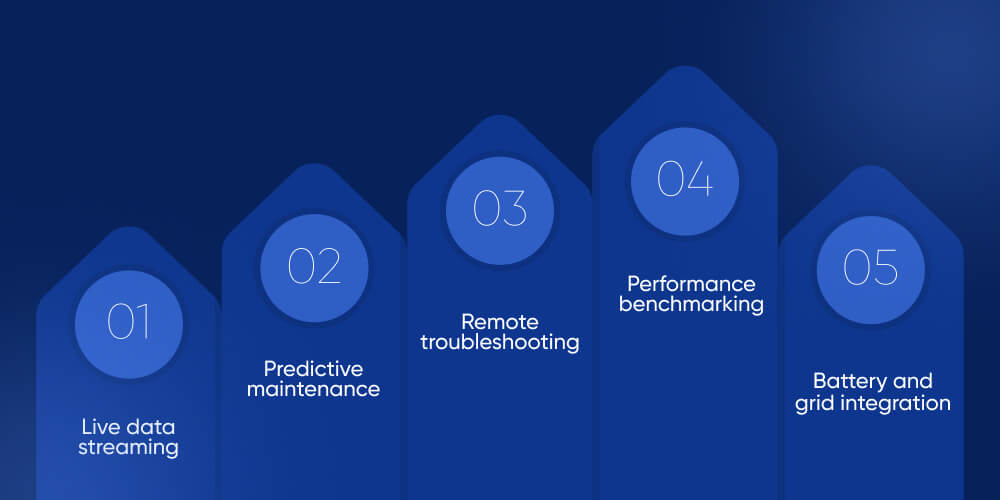
Live data streaming: Monitor power generation and system health minute-by-minute.
- Predictive maintenance: Use AI/ML models to forecast potential failures before they occur.
- Remote troubleshooting: Diagnose problems without deploying service technicians.
- Performance benchmarking: Compare outputs across panels, arrays, or locations.
- Battery and grid integration: Monitor and manage battery storage and grid feed-in with one platform.
For companies looking to develop a solar panel monitoring app, this IoT integration also offers key backend capabilities, real-time sync, push notifications, offline caching, and secure data access. It transforms your app from a static dashboard into an intelligent operations tool.
When implemented correctly, a solar panel monitoring system powered by IoT provides a competitive edge, not only in monitoring but also in reducing downtime, improving customer satisfaction, and driving operational efficiency.
Need a Smarter Solar Panel Monitoring System?
Leverage IoT to track, predict, and optimize energy output effortlessly. Designed for manufacturers, developers, and energy innovators.
Building a Smart Solar Monitoring Software Platform
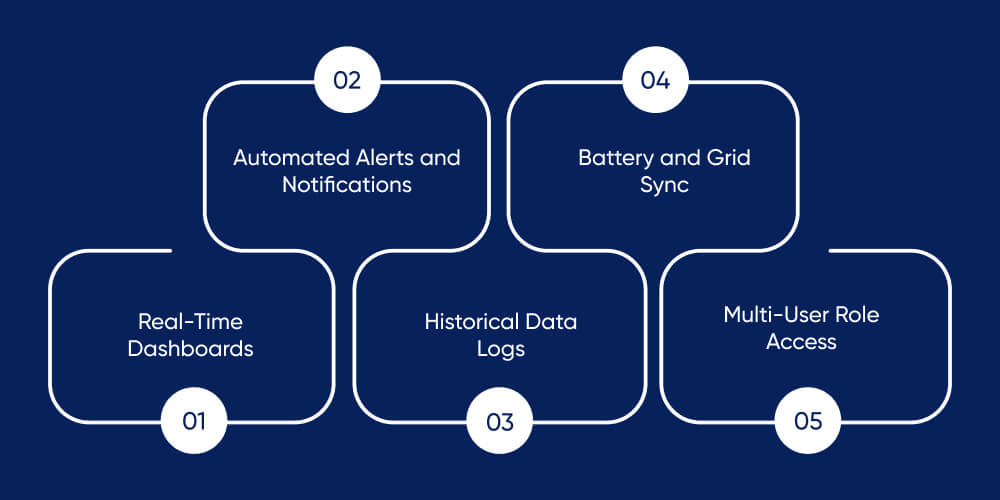
For solar businesses looking to gain full control over performance data, it becomes essential to develop a dedicated solar panel monitoring system. A robust software platform makes tracking, analyzing, and optimizing solar panel output easy and convenient.
With the integration of IoT, it becomes a powerful iot based solar panel monitoring system that not only gathers data but delivers insights across devices and locations.
Key Features of an Intelligent Monitoring Platform
To meet the needs of both internal teams and external clients, the software should support:
1. Real-Time Dashboards
Real-time dashboards offer a centralized view of energy production and system health. They present real-time output, voltage, temperature, and other critical data in graphical formats, enabling faster decision-making and performance tracking.
2. Automated Alerts and Notifications
Automated alerts, an essential feature in any solar panel monitoring app, notify users of things like underperformance, overheating, system faults, or disconnections. Alerts are sent via SMS, email, or push notifications to reduce downtime and speed up issue resolution.
3. Historical Data Logs
Storing and organizing data over time helps identify trends, seasonal patterns, or recurring faults. This also supports compliance reporting, performance benchmarking, and better planning for system upgrades or maintenance schedules.
4. Battery and Grid Sync
If the solar system includes battery storage or is connected to the grid, this feature helps you track input/output ratios, energy storage levels, and peak usage times. This can optimize energy distribution and reduce grid dependency.
5. Multi-User Role Access
A well-built solar panel monitoring system allows different user types, such as solar OEMs, field technicians, clients, and administrators, to access only the relevant data and features. This ensures security, accountability, and smooth collaboration across teams.
Looking to Reduce Solar Downtime?
Predict faults before they happen with intelligent IoT monitoring. Improve reliability, lower costs, and keep customers satisfied.
Software Architecture That Supports Scale
A modern solar panel monitoring system with IoT requires more than just a front-end interface. It demands a scalable architecture with smooth integration across:
- Edge devices and sensors for data collection
- Secure IoT gateways for transmission
- Cloud-based platforms for storage, analytics, and remote access
- RESTful APIs for integration with CRM, ERP, billing, and 3rd-party energy tools
Whether its about building a B2B platform for enterprise solar clients or a utility-grade system, a custom-built solution offers the flexibility to adapt, scale, and offer enhanced solar panel monitoring services.
With the right development partner, businesses can move beyond generic solutions and offer a purpose-built experience for every stakeholder in the solar lifecycle.
IoT App Development for Solar Panel Monitoring
As solar businesses expand their product range, it becomes essential for them to have a reliable and interactive mobile app to stay competitive. An advanced solar panel monitoring app offers clients, technicians, and operators real-time control in the palm of their hands.
Partnering with an experienced Custom software development company in Canada enables solar businesses to build an interactive mobile app that offers data access, remote diagnostics, and energy analytics.
Why Solar Businesses Need Custom Mobile Apps
Here are some good reasons why building a tailored app can benefit your operations:
On-the-Go Monitoring: View panel output, battery levels, and fault alerts anytime, anywhere.
Technician Toolset: Enable field teams to pair devices, update firmware, and access maintenance logs.
Client Engagement: Provide business customers with usage stats, savings reports, and billing insights.
Remote Commands: Allow secure shutdowns, resets, or load adjustments from mobile interfaces.
Offline Support: Let the app cache data and sync automatically once reconnected to the network.
Custom apps also help solar businesses to offer branded experiences, multi-language support, and integrations with third-party tools like CRMs or asset tracking systems. These capabilities are especially useful when targeting enterprise solar clients with complex reporting or multi-site management needs.
For businesses looking to develop a mobile app, it’s vital to hire IoT developers who understand both hardware connectivity and scalable cloud integration. Their expertise can help you avoid security pitfalls, optimize performance, and deliver a seamless user experience tailored to your solar products.
Want to Build a Custom Solar Monitoring App?
From edge devices to enterprise dashboards, we deliver tailored IoT software that powers growth. Your brand, your control.
Integration Challenges and How to Solve Them
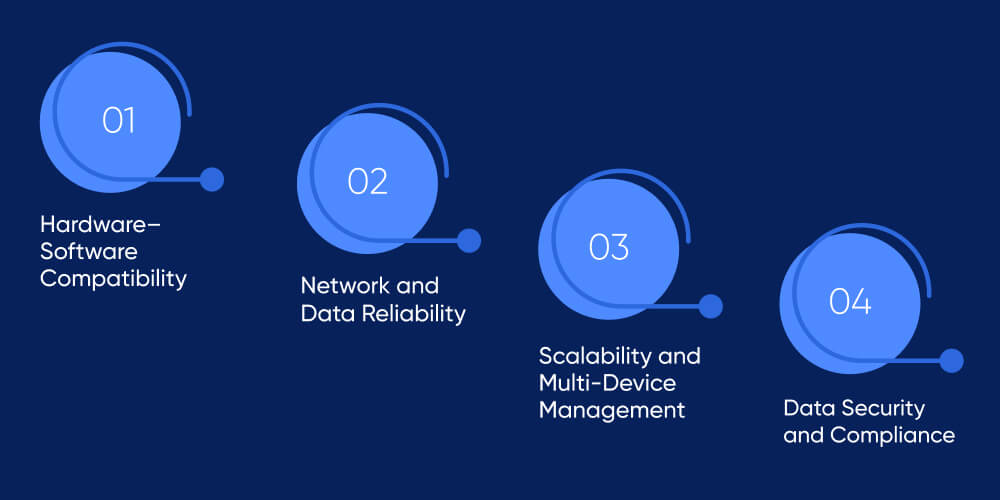
While building a smart solar panel monitoring system opens many doors for innovation, it also presents integration challenges—especially when combining hardware, cloud services, and mobile apps into one cohesive platform. Addressing these challenges early is key to delivering a seamless experience for your customers and teams.
Hardware–Software Compatibility
Solar hardware from different manufacturers often uses varied communication protocols and data formats. Ensuring your IoT platform can read and process data from multiple inverter types, sensors, or charge controllers requires flexible API support and standardized data mapping. This is where device-agnostic design plays a vital role.
Network and Data Reliability
In remote or off-grid locations, solar systems may experience unstable network conditions. Your platform should support edge computing or data buffering capabilities to handle offline scenarios gracefully. Redundancy and intelligent data recovery mechanisms ensure no data is lost during transmission gaps.
Scalability and Multi-Device Management
As solar deployments scale, managing hundreds or thousands of devices becomes complex. Without proper architecture, the system can become overloaded or insecure. Implementing dynamic device provisioning, token-based security, and automated firmware updates helps simplify operations as the network grows.
Data Security and Compliance
With sensitive customer data flowing through the system, businesses must ensure end-to-end encryption, secure authentication, and compliance with regional data protection standards. For solar businesses operating internationally, GDPR and energy-specific regulations must be addressed within the platform.
These challenges may sound technical, but they are common across many applications of IoT, particularly in energy, manufacturing, and smart infrastructure sectors. Partnering with an experienced IoT software provider helps you plan for these complexities and build a future-ready solution.
Why Partner with a Specialized IoT Software Development Company
Developing a reliable and scalable solar panel monitoring system with IoT requires more than standard development skills. It calls for deep expertise in sensor integration, cloud architecture, mobile interfaces, and secure device communication. That’s why it’s critical to hire IoT developers who specialize in end-to-end energy tech solutions.
DITS, a custom software development company in Canada, offers tailored IoT software development services to help solar businesses build smart, connected platforms, from hardware-level integration to intuitive monitoring apps. Whether you're creating your first prototype or scaling an existing product line, our team ensures seamless data flow, robust performance, and real-time control.
DITS has worked with software product teams, and energy startups to bring modern IoT-driven platforms to life. If your business is planning to launch or upgrade its IoT based solar panel monitoring solution, we’re here to help you accelerate the journey with the right tech stack, secure architecture, and full-cycle support.
Ready to Modernize Your Solar Infrastructure?
Bring intelligence, security, and real-time control to every installation. Your next-generation IoT platform starts here.
Conclusion
As the solar industry continues to scale, businesses must look beyond hardware and offer smart, connected experiences. A robust solar panel monitoring system with IoT helps you unlock real-time visibility, predictive maintenance, remote diagnostics, and greater energy efficiency—all of which directly improve your product’s value and customer satisfaction.
For solar panel manufacturers, energy software developers, and clean-tech startups, now is the time to integrate solar panel monitoring using IoT into your roadmap. Whether you’re building a platform from scratch or enhancing your existing app, the right technology partner can streamline development and speed up time to market.
At DITS, our IoT experts help you design scalable platforms and mobile apps that connect your solar systems with cloud intelligence. From device pairing to enterprise dashboards, our custom solutions support your growth in the competitive solar ecosystem.
FAQs
How do I monitor my solar panel output?
You can monitor your solar panel output using a digital monitoring system that connects your solar hardware to a software dashboard or mobile app. For commercial and industrial use, an IoT-enabled solution provides real-time data on energy production, efficiency, and fault detection across multiple installations.
How to Monitor Solar Panel Output with IoT?
To monitor solar panel output with IoT, sensors and smart meters are installed on your panels and inverters. These devices transmit real-time data to a cloud platform, where analytics tools track performance, detect anomalies, and provide remote access through a solar panel monitoring app or dashboard.
What is an IoT-based solar panel monitoring system?
An IoT-based solar panel monitoring system uses sensors, connected devices, and cloud platforms to track energy production, detect faults, and manage system health in real time.
How does IoT help improve solar panel performance?
IoT enables real-time data collection and remote diagnostics, allowing businesses to optimize panel output, predict maintenance needs, and reduce system downtime.
Why should I choose DITS for IoT software development?
DITS (Ditstek Innovations) offers end-to-end IoT software development services tailored for solar businesses—covering embedded systems, cloud platforms, and mobile apps designed to scale with your operations.
Can you help us integrate IoT into our existing solar panel monitoring system?
Yes, we specialize in enhancing legacy solar monitoring platforms by integrating IoT components like sensors, smart meters, and cloud analytics. We can modernize your system without disrupting current operations.
Can you build a custom IoT software platform to support our hardware?
Absolutely, we work closely with solar manufacturers to build end-to-end IoT software that connects directly with your hardware. Our team ensures seamless device pairing, real-time data processing, and a branded dashboard or app for both internal teams and end-users.
What kind of data can we collect through IoT in our solar platform?
With our iot-based-solar-panel-monitoring solutions, you can track voltage, current, energy yield, temperature, panel health, weather conditions, and more. We also support predictive analytics, fault detection, and integration with battery and grid systems.
How does DITS ensure data security in IoT-enabled solar monitoring systems?
Security is built into every layer of our IoT architecture. We implement secure device authentication, encrypted data transfer, role-based access, and cloud compliance standards to ensure your solar monitoring platform remains protected and scalable.

Dinesh Thakur
21+ years of IT software development experience in different domains like Business Automation, Healthcare, Retail, Workflow automation, Transportation and logistics, Compliance, Risk Mitigation, POS, etc. Hands-on experience in dealing with overseas clients and providing them with an apt solution to their business needs.
Recent Posts
Get in touch


